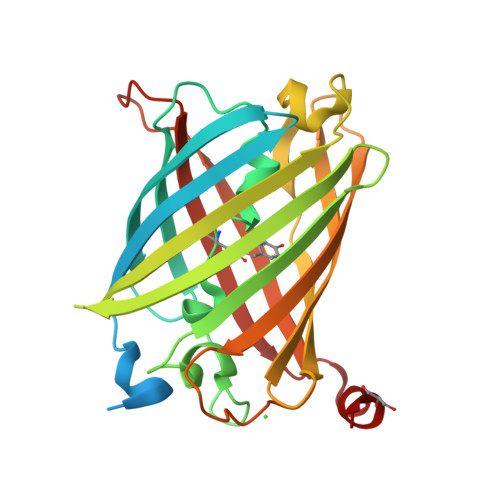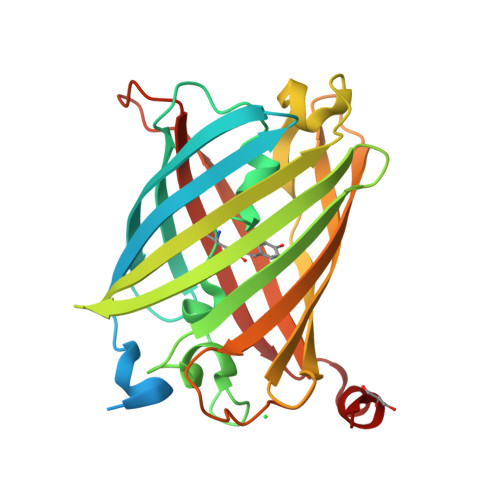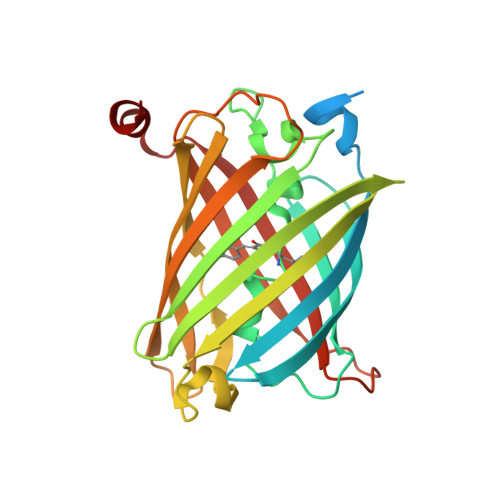Acid-Tolerant Reversibly Switchable Green Fluorescent Protein for Super-resolution Imaging under Acidic Conditions.
Shinoda, H., Lu, K., Nakashima, R., Wazawa, T., Noguchi, K., Matsuda, T., Nagai, T.(2019) Cell Chem Biol 26: 1469-1479.e6
- PubMed: 31422907
- DOI: https://doi.org/10.1016/j.chembiol.2019.07.012
- Primary Citation of Related Structures:
6J1A, 6J1B, 6J1C, 6JXF - PubMed Abstract:
Reversibly switchable fluorescent proteins (RSFPs) are crucial tags for super-resolution observation of protein localization and dynamics inside living cells. However, due to the high fluorescence pK a (∼5-6) of most RSFPs, their usage in acidic conditions (pH 4.5-6.0) has been limited. Here, we investigated a new photochromic mechanism in Gamillus, a recently developed green fluorescent protein with acid tolerance. Gamillus exhibits negative switching with especially high contrast in acidic conditions, and its off switching is caused by trans-to-cis isomerization of the chromophore hydroxyphenyl ring that accompanies protonation. Through a combination of rational design and saturation mutagenesis, we developed two variants with enhanced switching contrasts and off-switching speeds, designated rsGamillus-S and rsGamillus-F, respectively. The fluorescence intensity, off-switching speed, and switching contrast of the rsGamillus variants are only slightly affected by changes in pH between 4.5 and 7.5. Exploiting these properties, we succeeded in high-contrast super-resolution imaging of cellular architectures in acidic conditions.
Organizational Affiliation:
Department of Biotechnology, Graduate School of Engineering, Osaka University, 2-1 Yamadaoka, Suita 565-0871, Japan.



















